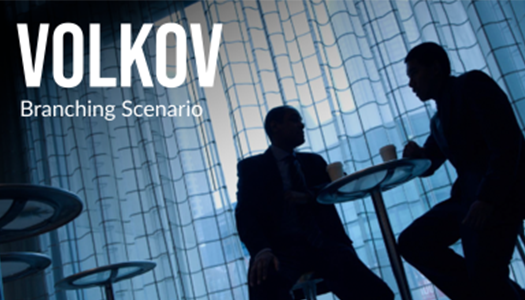Interactive Learning Objects (ILOs) are dynamic web-based tools that engage learners by allowing them to interact directly with visual content.
Interactive Formats
By harnessing interactivity, this media type has the potential to significantly enhance learner retention when strategically integrated into the course material. Particularly effective for tackling complex or abstract topics, ILOs transform learning from a passive experience into an active exploration, fostering deeper understanding and engagement.
Branching Scenarios present learners with decision points, where their choices lead to different paths and outcomes, providing realistic problem-solving experiences and promoting critical thinking skills, commonly used for simulations or role-playing exercises.
Drag and Drop activities allow users to interact with objects by clicking and dragging them to different locations, promoting hands-on learning and spatial understanding, commonly used for interactive quizzes or sorting exercises.
This video style seamlessly integrates images, videos, motion graphics, animation, and narration to engage learners. By synchronizing narration with visual elements, these videos aim to enhance retention and comprehension, ensuring a more impactful learning experience
Matching activities require learners to associate related items by pairing them together, reinforcing associations between concepts and promoting memory retention, and are often used for vocabulary review or concept reinforcement.
Click and Reveal interactions hide information behind clickable elements, allowing learners to uncover additional details or answers as they progress, encouraging active exploration and self-paced learning, commonly used for interactive presentations or tutorials.
Popups display additional information or multimedia content in a small window that appears when triggered by user actions, providing context or elaboration on specific topics without disrupting the main content flow, enhancing engagement and comprehension in e-learning modules.
Interactive Timeline offers an engaging way to explore events, concepts, or processes across time. It allows users to interact with the timeline, view details, and delve deeper into specific periods or events.
3D Models offer interactive representations of objects or environments in three-dimensional space, allowing learners to manipulate and explore them from different angles, facilitating deeper understanding and visualization of complex concepts.






